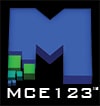This technology pertains to the use of spatial matter profiling technology that compares data obtained from the gathering of information that pertains to the structures of the matter, and comparing the data to profiles that correspond with specific senses. This process would be able to determine what perfume or cologne a person is wearing, based on the detection of the chemicals in the spray residue on the clothing, and compared the data to profiles of perfumes and colognes. Since the chemical makeup of all perfumes and colognes is unique, the match will be perfect every time. The system would also be able to detect if the perfume or cologne is genuine or an imitation, based on the specific concentrations of the unique makeup of the profile of the perfume or cologne detected.
Other uses could pertain to environmental science, such as the detection and analysis of odors from farms, dairies, and landfills. This could help to identify improved techniques of reducing odors through best management practices, such as implementing air purification equipment, capturing greenhouse gas emissions such as methane carrying odors from farm animals and converting the gas into electrical energy generation, and conducting landfill analysis to determine breakdown rates and composition of the landfill on a geospatial level such as developing regulation based on findings of the landfill composition to reduce air pollution.
Primarily, this satellite-based technology would not gather an actual air sample to determine the results, because the satellite would gather data based on the contents of space using high-resolution scanners that are able to detect even trace amounts of specific types of traces of odor in gases, chemicals, and other sources.

















